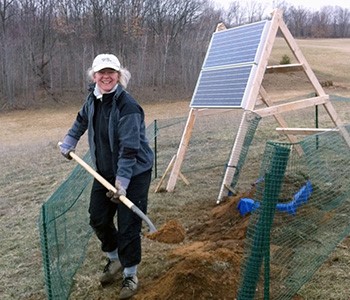Seismology
 Suzan van der Lee: Earthquakes are powerful evidence that the Earth is continuously reshaping and cause human and economic losses, but the seismic waves excited by earthquakes – as well as by ocean currents, other ambient noise, explosions, etc. -- also tell us stories about these events and about the Earth itself. Therefore, Suzan van der Lee uses data science, fieldwork, and computational methods to extract these stories from recorded seismic waves. Her group's goal is to understand the forces and processes in the Earth's interior that are associated with, for example, earthquakes, volcanism, mountain building, rifting, and plate tectonics, by imaging Earth's interior structure. These images provide major clues to the spatially varying thermal and compositional conditions within the upper mantle, which are causes and consequences of mantle convection and lithospheric deformation. She collects the seismograms during field experiments in remote locations as well as from a global, open data center (IRIS). Her data modeling techniques include but are not limited to seismic tomography, waveform fitting, surface wave analyses, receiver function analysis, ambient noise analysis, joint inversions, back-projection, earthquake studies, inverse methods, and machine learning.
Suzan van der Lee: Earthquakes are powerful evidence that the Earth is continuously reshaping and cause human and economic losses, but the seismic waves excited by earthquakes – as well as by ocean currents, other ambient noise, explosions, etc. -- also tell us stories about these events and about the Earth itself. Therefore, Suzan van der Lee uses data science, fieldwork, and computational methods to extract these stories from recorded seismic waves. Her group's goal is to understand the forces and processes in the Earth's interior that are associated with, for example, earthquakes, volcanism, mountain building, rifting, and plate tectonics, by imaging Earth's interior structure. These images provide major clues to the spatially varying thermal and compositional conditions within the upper mantle, which are causes and consequences of mantle convection and lithospheric deformation. She collects the seismograms during field experiments in remote locations as well as from a global, open data center (IRIS). Her data modeling techniques include but are not limited to seismic tomography, waveform fitting, surface wave analyses, receiver function analysis, ambient noise analysis, joint inversions, back-projection, earthquake studies, inverse methods, and machine learning.
